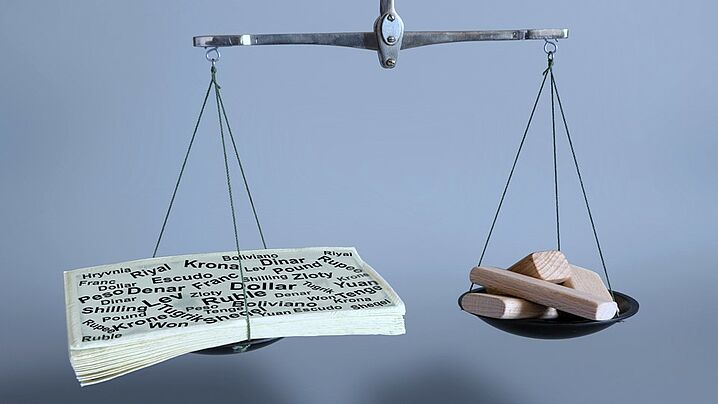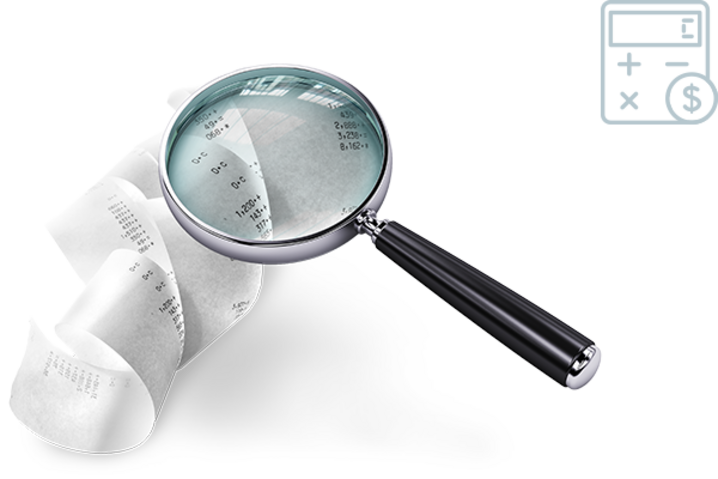The Material Ledger is one of the central objects of an integrative S/4HANA* and must be activated in S/4HANA. You will learn which functions the material ledger fulfills and what needs to be taken into account in S/4HANA in the further course.
What is Material Ledger?
In S/4HANA, the material ledger finally replaces the MM stock determination from ECC and keeps all material-related postings in a subledger (ledger) - thus becoming the "single source of truth" for all material- and stock-related postings and evaluations. In addition, it enables the display in different currency types as well as an actual costing, the results of which can be updated as new prices.
Analyses
The material ledger offers various new evaluation options, since all material-related postings are posted centrally in one ledger. In particular, the analysis of quantity, price and currency variances for purchased materials has become much more convenient and clear. It can replace many self-developed evaluations from ECC.
Actual costing and material valuation to date
What is actual costing and what is its necessity?
Each material contains a price in its master data. The so-called material valuation usually knows two types of price control: the standard price and the moving average price. In the case of the standard price, all costs incurred for the production of the material are determined at the beginning, and the resulting price is recorded as a fixed value for at least one period. In reality, the costs incurred in procuring the raw materials and manufacturing the end product do not remain constant, which causes the actual price to deviate from the standard price originally calculated.
In the moving average price, the so-called average inventory value is assigned to a material - that is, total inventory value divided by the number of items in stock. The price is recalculated after each goods receipt and invoice receipt, and the time of data entry has a direct influence on the current average price: depending on whether the consumption or invoice receipt is entered first, the price changes in one direction or the other. The currently recorded average price may therefore reflect a distorted value.
Material Ledger - new way of material valuation
The Material Ledger offers a new way of material valuation. It promises to make material valuation more transparent and accurate by enabling line-item recording of all material movements such as goods or invoice receipts. The Material Ledger combines the advantages of the two previously mentioned valuation types and reduces the respective disadvantages. A new internal price, the periodic unit price (PUP), is formed using actual costing. The effect of this type of material valuation is that, although the standard price is applied for at least one period, all differences between the standard price and the actual prices of the goods movements are recorded in the material ledger on a material basis. The evaluation of the prices at the end of the period forms the periodic unit prices and thus the basis for future material prices, but also transparency about price movements of the current period.
The material-specific recording of price differences allows an evaluation of which parts of the deviations are due to purchasing processes or material consumption. This allows a subsequent debit of the consumption accounts to which the material consumption was posted.
Parallel evaluation
Another essential function of the Material Ledger is the parallel valuation with transfer prices for inter- and intra-company (profit center) transactions and value flows. Material movements and stock values can be managed in three different valuations (legal valuation, group valuation and profit center valuation). These values are displayed in the material master.
Furthermore, material stocks can be managed in different - up to three - currencies. While the materials were valuated in the company code currency as standard, the material ledger provides local, global and a fixed currency for parallel valuation. The conversion takes place at historical rates (= rate of the respective posting). The fixed currency is particularly interesting for companies that are exposed to strong inflationary fluctuations.
Material Ledger Functions and their Relevance in S/4HANA
In S/4HANA, the Material Ledger (ML) is integrated directly into the general ledger via the Universal Journal (ACDOCA) as a subledger for inventory valuation and replaces Material Management (SAP MM) for inventory management. This ensures the "single source of truth" approach for material valuation and inventory management as well.
Accordingly, under this new data model, activation and use of the Material Ledger is mandatory for all companies with material valuation and inventory management. Inventory valuation is no longer part of Material Management (SAP MM). Optionally, parallel valuation and actual costing can be implemented and used.
However, some areas are exempt from mandatory capitalization. Below is an overview of areas requiring capitalization and optional areas under S/4HANA:
Summary
Integrated as a sub-ledger in the Universal Journal, the Material Ledger allows inventory management directly in the general ledger. This increases the quality of data and figures regarding inventory valuation in the general ledger. The optional actual cost approach allows the calculation of price changes on the final product, a periodic and quantity-based inventory adjustment and the presentation of cost of sales according to the periodic transfer prices (actual costs).
* In S/4HANA, unlike SAP ECC, many functions are not mapped across systems but integratively, i.e., as end-to-end processes in one system.


